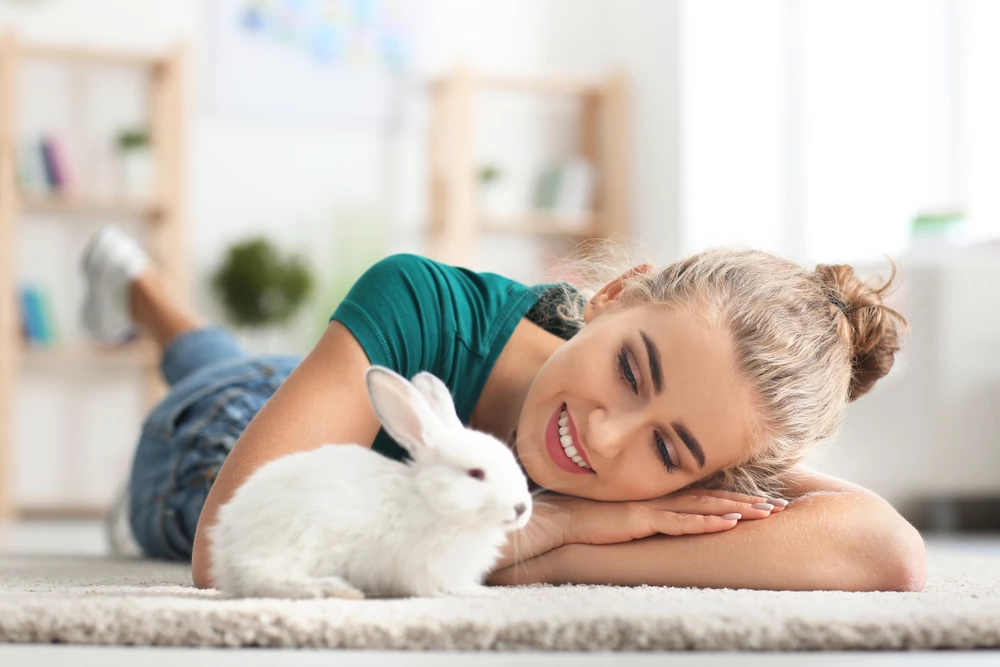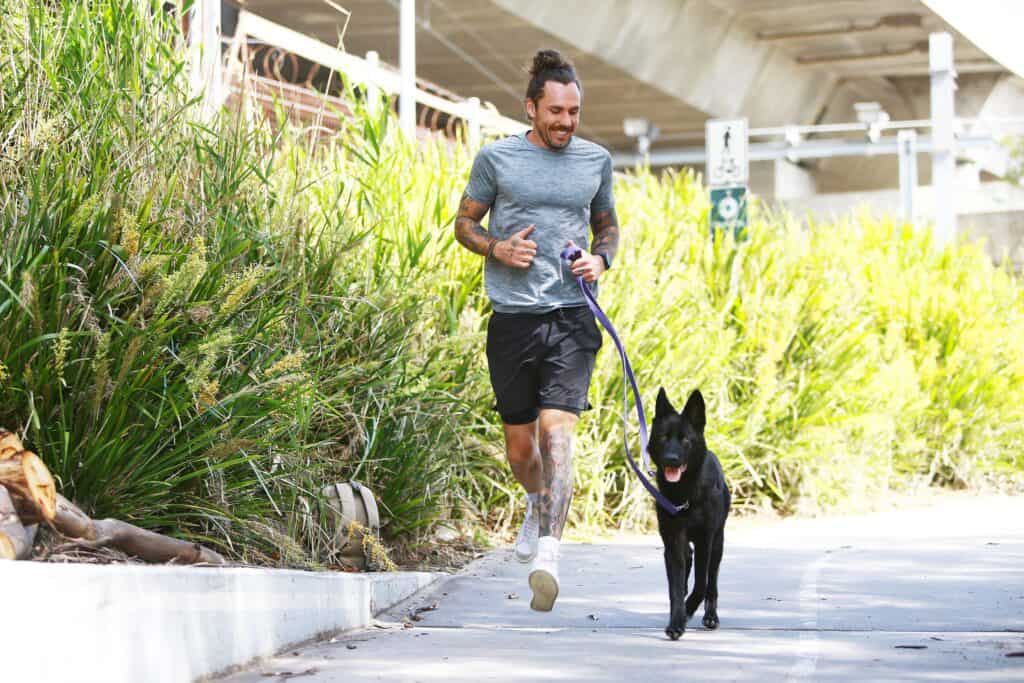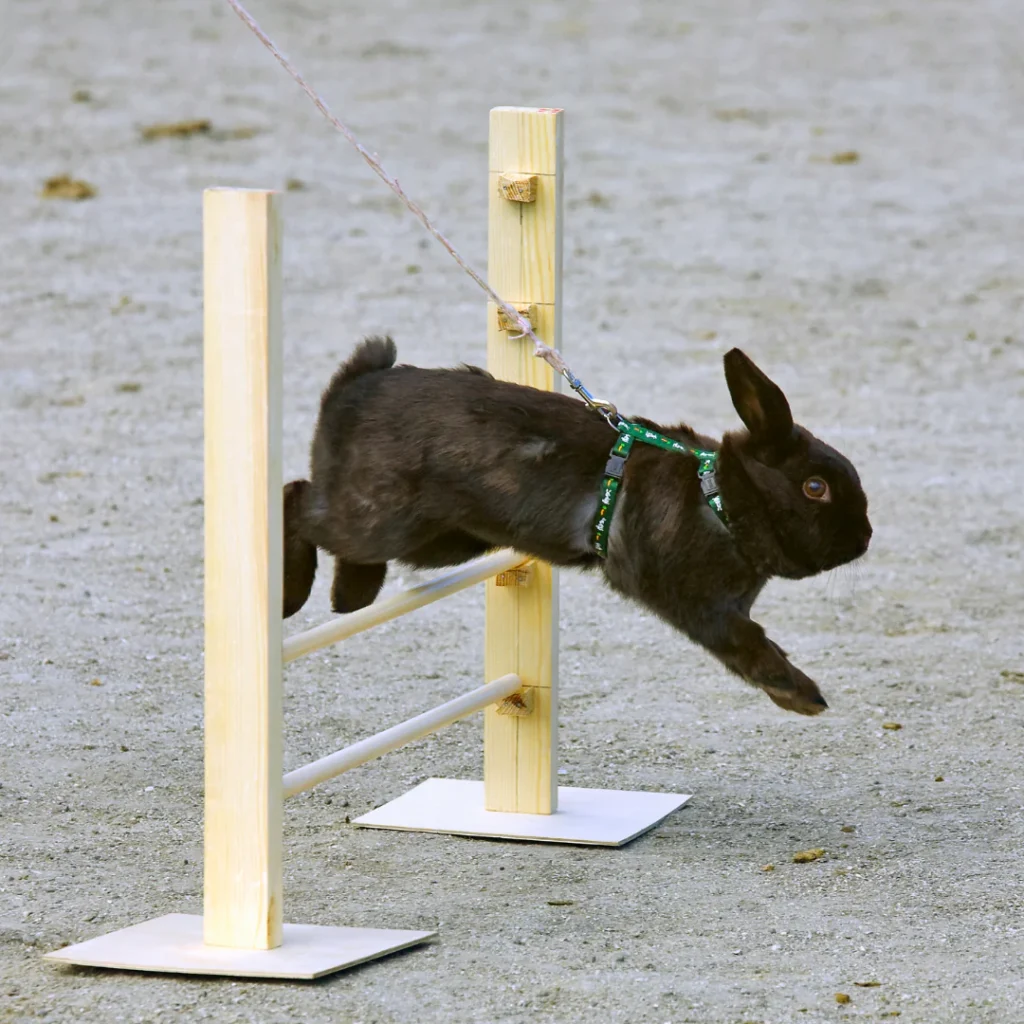From Couch Potato to Canine Athlete: The Ultimate Pet Fitness Challenge for Building Strength and Agility!
The Ultimate Pet Fitness Challenge is a program designed to help pet owners keep their furry friends fit and active. It involves setting realistic fitness goals, designing a workout plan, and incorporating fun and play into your pet’s routine.
This challenge is important because a sedentary lifestyle can have negative effects on pets, leading to weight gain, health issues, and a decreased quality of life. By keeping your pet fit and active, you can improve their mood, reduce their risk of disease, and increase their lifespan.
Why it’s important to keep your pet fit and active
A sedentary lifestyle can have detrimental effects on pets. Just like humans, pets need regular exercise to maintain a healthy weight and overall well-being. Without enough physical activity, pets can become overweight or obese, which can lead to a variety of health issues such as diabetes, heart disease, and joint problems. In addition to physical health problems, a lack of exercise can also affect a pet’s mental health. Pets that don’t get enough exercise may become bored, anxious, or even depressed.
Regular exercise is crucial for pets because it helps them burn off excess energy and maintain a healthy weight. Exercise also stimulates their minds and keeps them mentally sharp. It provides an outlet for their natural instincts and behaviors, such as running, jumping, and playing. Regular exercise can also strengthen their muscles and joints, improve their cardiovascular health, and boost their immune system. Overall, keeping your pet fit and active is essential for their overall health and well-being.
The benefits of a fit and active pet
There are numerous benefits to keeping your pet fit and active. First and foremost, regular exercise can improve your pet’s mood. Exercise releases endorphins in both humans and animals, which are known as “feel-good” hormones. These endorphins can help reduce stress, anxiety, and depression in pets, leading to a happier and more contented pet.
In addition to improved mood, regular exercise can also reduce the risk of disease in pets. Exercise helps maintain a healthy weight, which can prevent obesity-related diseases such as diabetes and heart disease. It can also improve digestion and prevent gastrointestinal issues. Furthermore, regular exercise can strengthen the immune system, making pets less susceptible to infections and illnesses.
Another significant benefit of keeping your pet fit and active is an increased lifespan. Pets that are overweight or obese tend to have shorter lifespans compared to those that maintain a healthy weight. Regular exercise can help pets live longer by reducing the risk of chronic diseases and promoting overall health.
Understanding your pet’s current fitness level
Before starting a fitness program for your pet, it’s important to assess their current fitness level. This will help you determine their starting point and set realistic goals. One way to assess your pet’s fitness level is by observing their daily activities. Are they able to walk or run without getting tired? Do they have difficulty climbing stairs or jumping onto furniture? These observations can give you an idea of their current fitness level.
It’s also important to consult with a veterinarian before starting a fitness program for your pet. A veterinarian can perform a thorough examination and provide guidance on the appropriate level of exercise for your pet. They can also identify any underlying health issues that may affect your pet’s ability to exercise.
Setting realistic fitness goals for your pet
Setting realistic fitness goals is crucial for the success of your pet’s fitness journey. It’s important to set goals that are achievable and tailored to your pet’s age, breed, and current fitness level. For example, if you have an older dog with joint issues, setting a goal of running five miles every day may not be realistic or safe.
When setting goals for your pet, consider their individual needs and abilities. Start with small, attainable goals and gradually increase the intensity and duration of their workouts. This will help prevent injuries and keep your pet motivated. Remember, the ultimate goal is to improve your pet’s overall health and well-being, not to achieve a specific weight or appearance.
Let’s break down some sample fitness goals tailored for a few popular pet types.
Dogs
- Endurance: Increase daily walk length by 10 minutes each week.
- Agility: Set up a backyard obstacle course and practice navigating it 3 times a week.
- Strength: Play fetch with a weighted ball or toy for short bursts.
- Mental Stimulation: Teach new tricks and commands for 15 minutes daily.
- Breed-specific:
- Herding dogs: Learn basic herding commands and practice with safe objects.
- Retrievers: Expand fetch distances and incorporate water-based retrieval.
Cats
- Playfulness: Engage in 15-minute interactive play sessions twice a day (laser pointers, feather wands, etc.).
- Vertical Exploration: Invest in a multi-level cat tree or create climbing areas.
- Weight Management: Switch to timed or puzzle feeders to slow down eating and promote activity.
- Mental Stimulation: Hide treats around the house for them to find.
Fish
- Aquarium Environment: Change up decoration placement every few weeks to encourage exploration.
- Water Flow: If appropriate for the species, increase water flow slightly in the tank to provide a little more ‘resistance’ to swim against.
- Varied Diet: Research safe and appropriate food variations to offer alongside regular food.
Birds
- Flight: If your bird’s wings are clipped, allow supervised ‘flight time’ in a safe room to exercise those muscles.
Designing a workout plan for your pet
A well-rounded workout plan for pets should include a combination of cardiovascular exercise, strength training, and mental stimulation. Cardiovascular exercise helps improve endurance and cardiovascular health. This can be achieved through activities such as walking, running, swimming, or playing fetch.
Strength training is important for building muscle and maintaining joint health. This can be done through activities such as agility training, climbing stairs, or playing tug-of-war. Mental stimulation is also crucial for keeping pets engaged and preventing boredom. This can be achieved through puzzle toys, obedience training, or interactive play sessions.
It’s important to vary your pet’s workouts to prevent boredom and keep them motivated. Incorporate different activities and exercises into their routine to keep things interesting. For example, one day you can go for a long walk, the next day you can play fetch in the backyard, and the following day you can do some agility training.
Here are some sample workout plans for dogs and cats. It’s important to customize these based on your pet’s fitness level, age, and any health considerations.
Dogs
Sample Beginner Workout Plan (start slow, gradually increase time/intensity):
- Monday: Brisk walk for 20 minutes
- Tuesday: Play session with fetch or tug-of-war (10-15 minutes)
- Wednesday Rest or light walk
- Thursday: Obstacle course practice (10 minutes focusing on mastering a few obstacles)
- Friday: Brisk walk + 5 minutes of trick training
- Saturday: Longer walk (30-40 minutes)
- Sunday: Rest
Sample Intermediate Plan (for dogs in good fitness):
- Monday: 30-40 minute run/jog (keep your dog on leash)
- Tuesday: High intensity fetch session with weighted toy (short bursts, about 15 minutes)
- Wednesday Active rest (short walk, gentle play)
- Thursday: Backyard obstacle course (2-3 runs)
- Friday: Longer walk and trick training (30 minutes walk + 10 minutes training)
- Saturday: Hiking on a dog-friendly trail
- Sunday: Rest
Cats
Sample Playful Activity Plan (focus on short bursts of energy):
- Morning: 15 minutes of interactive play (feather wand, laser pointer, chasing toys)
- Afternoon: Place a cat tree near a window for climbing and birdwatching
- Evening: Another 15-minute play session, followed by a treat hidden in a puzzle toy
- Rotate toys regularly: Change out the toys you use during play sessions to keep things interesting.
Important Notes
- Warm-up and Cool-down: A few minutes of light walking before and after helps with dogs. For cats, a gentle play session before a high-intensity one acts as a warm-up.
- Hydration: Always have fresh water available!
- Monitoring: Watch for signs of fatigue (panting, lagging). Rest is crucial.
- Weather: Adjust plans for very hot or cold weather.
Tips for incorporating fun and play into your pet’s workout routine
Making workouts fun and engaging is essential for keeping pets motivated. Here are some tips for incorporating fun and play into your pet’s workout routine:
1. Use toys: Incorporate toys into your pet’s workouts to make them more enjoyable. For example, use a frisbee or a ball for a game of fetch, or use a flirt pole for some high-intensity play.
2. Play with other pets: If your pet enjoys the company of other animals, organize playdates with other dogs or cats. This can provide socialization opportunities and make workouts more enjoyable.
3. Try new activities: Explore different activities with your pet to keep things interesting. Take them hiking, try out a new dog sport, or enroll them in an agility class. Trying new activities can stimulate their minds and provide a fresh challenge.
4. Use positive reinforcement: Reward your pet with treats, praise, or playtime after a successful workout. This will help reinforce positive behaviors and make workouts more enjoyable for your pet.
The importance of proper nutrition for a fit and healthy pet
Proper nutrition is essential for a fit and healthy pet. A balanced diet that provides all the necessary nutrients is crucial for supporting your pet’s overall health and fitness. It’s important to choose high-quality pet food that is appropriate for your pet’s age, breed, and activity level.
When selecting pet food, look for options that contain real meat as the first ingredient and avoid those that contain fillers or artificial additives. It’s also important to feed your pet the appropriate portion size to prevent overeating and weight gain.
In addition to a balanced diet, treats should also be chosen carefully. Opt for healthy, low-calorie treats that are made with natural ingredients. Avoid giving your pet table scraps or human food, as these can be high in fat and unhealthy for pets.
How to track your pet’s progress and adjust their workout plan accordingly
Tracking your pet’s progress is important to ensure that their fitness plan is effective and to make any necessary adjustments along the way. One way to track progress is by monitoring their weight. Regularly weigh your pet and keep a record of their weight over time. If you notice any significant weight gain or loss, it may be necessary to adjust their diet or exercise routine.
Another way to track progress is by observing changes in your pet’s behavior and energy levels. Are they more active and playful? Do they have more stamina during walks or play sessions? These changes can indicate improvements in their fitness level.
It’s also important to consult with a veterinarian regularly to assess your pet’s progress and make any necessary adjustments to their workout plan. A veterinarian can provide guidance on the appropriate level of exercise for your pet and help you make any necessary modifications based on their individual needs.
Overcoming obstacles and staying motivated throughout the fitness journey
Keeping your pet fit and active can sometimes be challenging, but there are ways to overcome obstacles and stay motivated. Here are some tips:
1. Make it a routine: Incorporate exercise into your daily routine to make it a habit. Set aside specific times each day for walks or play sessions with your pet.
2. Find a workout buddy: If possible, find a workout buddy for your pet. This can be another pet or even a human companion. Exercising with a buddy can make workouts more enjoyable and provide motivation.
3. Mix it up: Vary your pet’s workouts to prevent boredom. Try different activities, exercises, and locations to keep things interesting.
4. Set small goals: Break down your pet’s fitness journey into small, achievable goals. Celebrate each milestone along the way to stay motivated.
5. Stay positive: Keep a positive attitude and provide lots of praise and encouragement for your pet’s efforts. Positive reinforcement can go a long way in keeping them motivated.
Celebrating your pet’s achievements and maintaining their fitness for life
Celebrating your pet’s achievements is important for maintaining their fitness for life. When your pet reaches a milestone or achieves a goal, take the time to celebrate their success. This can be done through praise, treats, or even a special outing or activity.
Maintaining your pet’s fitness for life requires consistency and commitment. Continue to provide regular exercise and mental stimulation for your pet even after they have reached their initial goals. Remember that fitness is an ongoing journey, and it’s important to continue challenging your pet and providing opportunities for growth.
Conclusion:
Keeping pets fit and active is essential for their overall health and well-being. The Ultimate Pet Fitness Challenge provides a framework for pet owners to set realistic goals, design a workout plan, and incorporate fun and play into their pet’s routine.
By keeping pets fit and active, owners can improve their pet’s mood, reduce the risk of disease, and increase their lifespan. So why wait? Take the Ultimate Pet Fitness Challenge and start your pet’s fitness journey today.
Johny is a dedicated pet enthusiast, author, and the driving force behind the insightful content at PetSWAT. With a deep passion for animals and a wealth of knowledge acquired through years of experience, Johny brings a unique perspective to the world of pet care and companionship.




